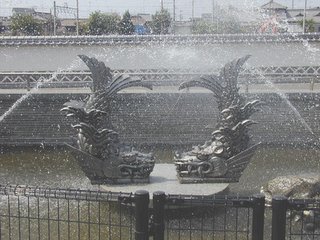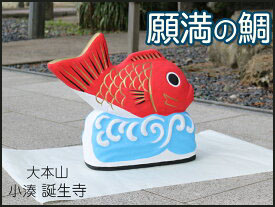::::::::::::::::::::::::::::::::::::::::::::::::::::::::::::::::::::::::::::::::::::::::::::::::::::
FISH AND SEAFOOD SAIJIKI
::::::::::::::::::::::::::::::::::::::::::::::::::::::::::::::::::::::::::::::::::::::::::::::::::::
This saijiki contains kigo about seafood and fish of all seasons.
More haiku will be added later.
. WASHOKU
FISH AND SEAFOOD ... THIS complete Saijiki
. WASHOKU : Fish and Seafood
Individual posts
. "Career Fish"(shusse-uo 出世魚)
They change their name as they grow larger.
. Fishing in all seasons
humanity kigo
. Boats and ships used for fishing
humanity kigo

. Sakana 魚 toys and amulets with FISH .
:::::::::::::::::::::::::::::::::::::::::::::::::::::::::::::::::::::::::::::::::::::::::::::::::::::
:::::::::::::::::::::::::::::::::::::::::::::::::::::::::::::::::::::::::::::::::::::::::::::::::::::
Seafood in Spring
***** Location: Japan
***** Season: Spring
***** Category: Humanity
*****************************
Explanation
The word seafood just like that is not a kigo.
I will make a list here of the seafood that appears in the Japanese Saijiki and the ones we added so far worldwide. Since most of the seafood end up at the table, they are now included in the WASHOKU part of the World Kigo Database.
Two types of shells (seashells, sea shells)
(general terms, not used as kigo)
nimaigai 二枚貝 (にまいがい) bivalve shell
zweischalige Muschel; Bivalvia
makigai 巻き貝 (まきがい) conch, spiral shell
Kreiselschnecke; Spiralmuschel
:::::::::::::::::::::::::::::::::::::::::::::::::::::::::::::::::::::::::::::::::::::::::::::::::::
Late Spring
. shiohigai 汐干貝(しおひがい)shells in the tideland
and more kigo about seashells
.................................................................................
Sakuraebi, sakura ebi, sakura-ebi 桜蝦 (さくらえび)
"cherryblossom shrimp", stardust shrimp
hikari ebi ひかり蝦(ひかりえび)
This is a speciality of the Suruga Bay, Sagami Bay and a few others.
Spring Kigo from the Beach
A favorite spring food.
Sakura-Garnele
Uni 雲丹 (うに) sea urchin
海胆(うに)、海栗(うに)
Seeigel
:::::::::::::::::::::::::::::::::::::::::::::::::::::::::::::::::::::::::::::::::::::::::::::::::::
All Spring
Akagai, "red shell", ark shell, ark clam 赤貝 (あかがい)
Anadara broughtoni
..... kisa 蚶(きさ)
"blood shell", chigai 血貝(ちがい)
. WASHOKU
Information and Dishes with arc clam
.......................................................................
Asari, asari 浅蜊 (あさり) short-neck clam; baby-necked clam; littleneck clam
Ruditapes philippinarum
collecting littleneck clams, asari tori 浅蜊取(あさりとり)
vendor of littleneck clams, asari uri 浅蜊売(あさりうり)
boat to collect asari clams , asaribune 浅蜊舟(あさりぶね)
asari clam soup, asarijiru 浅蜊汁(あさりじる)
Asari-Muschel; kleine Miesmuschel
They are a favorite in Miso soup or fried with butter.
They live in the estuary of rivers, being saltwater clams. In Edo, many were harvested in the Sumida river by children in the morning and sold in the streets for the breakfast soup, like Shijimi clams too.

mukimi uri, mukimi-uri 剥き身売り selling shelled (stripped) clams
a job for children in Edo
They walked around in the morning around the public baths calling
asari mukin, hamaguri mukin 浅蜊むきん蛤むきん
mukin was their way of saying mukimi 剥き身
clams were also sold in their shells, calling :
kara asari asari からあさりあさり
hamaguri ya hamaguri はまぐりやはまぐり
The children were dressed in simple yukata with spotted patterns, wearing a short obi belt (sanshaku obi 三尺帯) for children, with a small tenugui 手拭い towel over the shoulder.
むきみ売りぎょうさんにして一つまけ
mukimi-uri gyoosan ni shite hitotsu make
the vendor of stripped clams
makes a big fuss and then
gives one extra
5文が剥き身擂鉢を内儀だし
go mon ga mukimi suribachi o naigi dashi
five penny for the stripped clams
and the wive of the vendor brings
the grinding mortar
stripped clams were often grinded and put into soup or salads.
. Food vendors in Edo .
. senryu, senryū 川柳 Senryu in Edo .
- - - - -
陽炎にぱっかり口を浅蜊哉
kageroo ni pakkari kuchi o asari kana
in the heat shimmers
its mouth pops up open -
littleneck clam
Kobayashi Issa 小林一茶
.......................................................................
Bakagai, surf clam 馬珂貝 (ばかがい)
Mactra chinensis
..... bakagai 馬鹿貝(ばかがい, バカ貝)
ubagai うば貝(うばがい)ootorigai おおとり貝(おおとりがい)
meat of a surf clam, aoyagi あおやぎ
. . . CLICK here for Photos !
Looks similar to a hamaguri clam.
Trogmuschel
baka means a stupid person. Since this clam has its foot hanging out, it looks like the toungue of a stupid person with his mouth always open.
Another type is the
shiofuki "water sprouting clam" 潮吹 (しおふき)
shiofukigai 潮吹貝(しおふきがい)
. . . CLICK here for Photos !
It is often prepared as tsukudani, but not as delicious as asari.
Another type is the
Hokkigai 北寄貝 (ほっきがい, ほっき) surf clam
Spisula sachalinensis
hokki hiku ほっき曳く(ほっきひく)
hokki nabe, hodgepodge with hokki ほっき鍋(ほっきなべ)
vendor of hokki, hokki uri ほっき売(ほっきうり)
steamed hokki, mushi hokki 蒸ほっき(むしほっき)
speciality of Yamagata, also in sushi.
Ubagai, (eine Trogmuschel)
:::::::::::::::::::::::::::::::::::::::::::::::::::::::::::::::::::::::::::::::::::::::::::::::::::::
Hamaguri, clam shells, venus clams 蛤 (はまぐり)
Venusmuscheln
sudaregai, 簾貝 (すだれがい )
sudare hamaguri スダレハマグリ
:::::::::::::::::::::::::::::::::::::::::::::::::::::::::::::::::::::::::::::::::::::::::::::::::::::
Igai, mussle 貽貝 (いがい)
Mytilus coruscus
tansai 淡菜(たんさい),i no kai 貽の貝(いのかい)
"black mussle", kurogai 黒貝(くろがい)
"princess mussle", himegai 姫貝(ひめがい)
nitarigai にたり貝(にたりがい)
Setogai 瀬戸貝(せとがい)
. . . CLICK here for Photos !
Seemuschel (Familie Miesmuscheln)
also
karasugai, "crow mussle" 烏貝 (からすがい)
Found in all rivers and sweetwaters of Japan. Its name comes from the black color of the shell. It tasts of mud and is not a favorite for food.
Cristaria plicata spatiosa
Teichmuschel
Isoginchaku 磯巾着 (いそぎんちゃく) sea anemone
Spring kigo from the Beach
Itayagai, itaya shell, 板屋貝 (いたやがい)
Pecten albicans
shakushi gai 杓子貝(しゃくしがい)
. . . CLICK here for Photos and English information !
shajuji, shamoji 杓子 is a spatula for scooping rice.
:::::::::::::::::::::::::::::::::::::::::::::::::::::::::::::::::::::::::::::::::::::::::::::::::::::
Kisago 細螺 (きさご) trochid sand snail, sand snail
Umbonium costatum
zezegai ぜぜ貝(ぜぜがい). ibokisagoいぼきさご, kishago きしゃご
Not used as food.
Strandschnecke
Koyasugai 子安貝 (こやすがい) cowrie
takaragai "treasure shell" 宝貝(たからがい),たから貝
"treasure from Hachijoo Island" hachijoo takara
八丈宝貝 (はちじょうたから) hachijoo takaragai
baishi 貝子(ばいし)
. . . CLICK here for Photos !
Kaurischnecke; Kaurimuschel
:::::::::::::::::::::::::::::::::::::::::::::::::::::::::::::::::::::::::::::::::::::::::::::::::::::

Mategai, razer shell 馬蛤貝 (まてがい, 馬刀貝)
Solen gouldi
mate 馬刀(まて)
"razor shell", kamisorigai 剃刀貝(かみそりがい)
matetsuki 馬刀突(まてつき)、
digging for razor shells, mate hori 馬刀堀(まてほり)
Scheidenmuschel
:::::::::::::::::::::::::::::::::::::::::::::::::::::::::::::::::::::::::::::::::::::::::::::::::::::
Nina 蜷 (にな) fresh-water snail, marsh snail
Semisulcospira bensoni
mina みな、
river nina, kawanina 川蜷(かわにな)
sea nina, umi nina 海蜷(うみにな)、
beach nina, iso nina いそにな
path a nina took, nina no michi 蜷の道(になのみち)
. . . CLICK here for Photos !
Most haiku are about the sweetwater type found in rivers and wet rice fields.
spiralförmige Süßwasserschnecke, Kawanina
文字のなきむかしのありて蜷の道
moji no naki mukashi no arite nina no michi
long long ago
there was a time without letters -
path of the marsh snail
Amemiya Kinuyo 雨宮きぬよ

Nina no Michi 蜷の道 高橋時枝句集
Poetry collection by Takahashi Tokie
:::::::::::::::::::::::::::::::::::::::::::::::::::::::::::::::::::::::::::::::::::::::::::::::::::::
Sakuragai 桜貝 (さくらがい) cherry shell
Nitidotellina nitidula
"beni-red shell, benigai 紅貝(べにがい)
"blossom shell", hanagai 花貝(はながい)
The shell has the thin, slight pink color of a cherry blossom. Often found along the beaches of the Inland Sea. Children love to collect it.
Tellinamuschel
Sazae, 栄螺 さざえ, turban shell
tsubu つぶ、sazae 拳螺(さざえ)
"grilled in the conch", tsuboyaki 壷焼 (つぼやき)
Shijimi 蜆 (しじみ) corbicula
Corbicula japonica
shijimigai 蜆貝(しじみがい), mashijimi 真蜆(ましじみ)
big shijimi, ooshijimi 大蜆(おおしじみ)
Yamato shijimi 大和蜆(やまとしじみ)
Seta shijimi 瀬田蜆(せたしじみ)
collecting shijimi, shijimi tori 蜆採(しじみとり)
scratching for shijimi, shijimi kaki 蜆掻(しじみかき)
digging for shijimi, shijimi hori 蜆堀(しじみほり)
vendor of shijimi, shijimi uri 蜆売(しじみうり)
river with shijimi, shijimi kawa蜆川(しじみかわ)
boat for collecting shijimi,
shijimibune 蜆舟(しじみぶね)
die Corbicula
Shijimi was very popular during the Edo period. Children would get them and sell them in the early morning hours for the shijimi miso soup and thus make a little pocket money.
WASHOKU
Shijimijiru 蜆汁, しじみ汁 miso with corbicula clams
Shiomaneki 望潮 (しおまねき) fiddler crab
Uca arcuata
ushiomaneki 潮招(うしおまねき)
tauchigani 田打蟹(たうちがに)
. . . CLICK here for Photos !
Winkerkrabbe
:::::::::::::::::::::::::::::::::::::::::::::::::::::::::::::::::::::::::::::::::::::::::::::::::::::
Tanishi 田螺 (たにし) paddie snails, mud snails
Tokobushi, round abalone 常節 (とこぶし)
Sulculus diversicolor aquatilis
tokobushi 小鮑(とこぶし)
"ten thousand year old abalone" mannen awabi 万年鮑(まんねんあわび)
"thousant year old shell", sennengai 千年貝(せんねんがい)
. . . CLICK here for Photos !
..........................................................................
Torigai, 鳥貝 (とりがい)egg cockle
"bird clam" - Fulvia mutica
Herzmuschel
the last body of the
cockle-pickers washed ashore ...
frightened children
(Illegal immigrant Chinese cockle-pickers drowned along the north-eastern English coast)
- Susumu Takiguchi - 2005
..........................................................................
Tsukihigai, kind of scallop 月日貝
. . . CLICK here for Photos !
close to the hotategai.
lit. "moon sun scallop", denoting the passge of time.
:::::::::::::::::::::::::::::::::::::::::::::::::::::::::::::::::::::::::::::::::::::::::::::::::::::
Yadokari (yadogari) 寄居虫 (やどかり) hermit crab
goona ごうな, hon yadokari 本やどかり(ほんやどかり)
vendor of yadogari , goona uri ごうな売(ごうなうり)-
..... yadokari uri やどかり売(やどかりうり)
Crab living in the shell of a conch. Vendors come from the sea towns to the big cities to sell their fare as an entertainment for children or food.
Einsiedlerkrebs. Fam. Paguroidea
goona, gauna 身寄虫
住みづらい里はないとや身寄虫どの
sumi-zurai sato wa nai to ya gauna dono
"No cruel village
for me!"
Mr. Hermit Crab
I assume that the first two phrases are being spoken by the crab. Issa, rejected and scorned by many of the people in his own home village who took the side of his stepmother in his long and bitter inheritance dispute, envied the crab that carries home on his back.
Tr. and comment : David Lanoue
sumizurai sato wa nai to ya gōna-dono
Sir Hermit Crab says
I feel right at home
in any village
This hokku is from the second lunar month (March) in 1824. This was two months after Issa's last surviving child had died and ten months after his wife had died. In the hokku Issa reads the behavior of a land hermit crab and guesses what it seems to be implying (to ya) with its body language. The "hermit" part of the crab's name is not part of its Japanese name. Issa uses its venerable ancient name, pronounced with a long o in his time, although he probably knows its colloquial name, too: yado-kari, 'creature that borrows its house.' This colloquial name reflects the fact that hermit crabs borrow shells of various sizes to fit their own changing size as they grow larger, shells they can withdraw into when danger appears. Once they find a shell of the right size, they drag it around with them for protection as long as it fits them.
Issa speaks politely to the crab, as if he were an honored human being, and he takes the crab to be telling him there aren't any villages that are or would be difficult for the crab to live in. The crab keeps his shell with him at all times, so he has no problem feeling at home wherever he is. Issa seems to be interested in the honored crab's advice, since he is in the opposite situation himself. Judging by the tone of the hokku, Issa seems to imply that although he possesses no shell to help him forget the loss of his family and the coldness of most of his fellow villagers, he can appreciate what the crab is telling him. By this time he probably realizes he needs to develop at least a soft shell in order to remain in his hometown for the rest of his life -- his firm commitment.
Chris Drake
*****************************
Worldwide use
Olm, or proteus (Proteus anguinus)
Europe
*****************************
Things found on the way
japanesefood.about.com : japanese seafood recipes
more than 10 pages to explore
*****************************
HAIKU
馬刀突の子の上手なりつどひ見る
matetsuki no ko no joosu nari tsudoi miru
a child reaching for razor shells
gets more and more skillfull...
the whole family watches
Takahama Kyoshi 高浜虚子
:::::::::::::::::::::::::::::::::::::::::::::::::::::::::::::::::::::::::::::::::::::::::::::::::::::
面白や馬刀の居る穴居らぬ穴
omoshiro ya mate no iru ana iranu ana
how interesting !
a hole with a razor shell
a hole without one
Masaoka Shiki 正岡子規

Illustraded by Terry Steudlein, September 2008
*****************************
Related words
. kaiawase, kai-awase 貝合 (かいあわせ) clam shell game
***** WASHOKU : SEAFOOD and FISH SAIJIKI - TOP
:::::::::::::::::::::::::::::::::::::::::::::::::::::::::::::::::::::::::::::::::::::::::::::::::::::::::::::::::::::::::::
[ . BACK to DARUMA MUSEUM TOP . ]
[ . BACK to WORLDKIGO . TOP . ]
:::::::::::::::::::::::::::::::::::::::::::::::::::::::::::::::::::::::::::::::::::::::::::::::::::::::::::::::::::::::::::





























